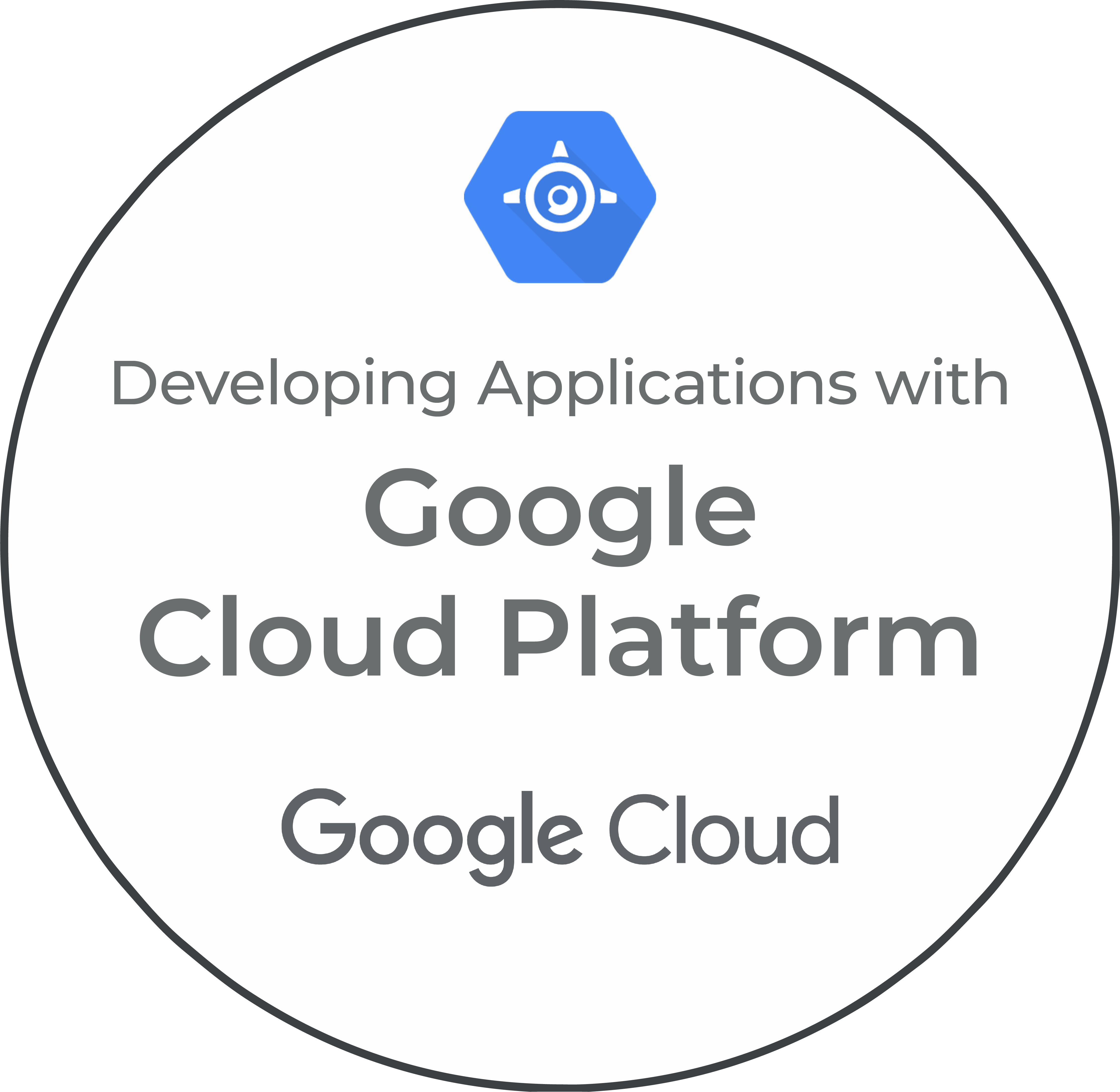- Duration: 3 days
- Format: Face-to-face or distance learning
- Prerequisites: Completion of the course Google Cloud Platform Fundamentals or equivalent experience. Experience in application development.
- Audience: Application developers
- Price: Please contact us
- More information in our training catalogue
The course in detail
Module 1: Good practice in application development
- Manage code and development environments.
- Develop and design secure, scalable and reliable microservices and applications,
- Integrate and deploy continuously.
- Rethink application architecture for the cloud.
Module 2: Google Cloud Client Libraries, Google Cloud SDK, and Google Firebase SDK
- Install and use Google Cloud client libraries, Google Cloud SDK and Google Firebase SDK.
- Lab: Install Google Cloud, Google Cloud SDK, and Firebase SDK client libraries on a Linux installation and set up application credentials.
Module 3: Overview of data storage options
- Gain an overview of application data storage options.
- Discover use cases for Google Cloud Storage, Google Cloud Datastore, Cloud Bigtable, Google Cloud SQL and Cloud Spanner.
Module 4: Best practices for using Google Cloud Datastore
- Establish best practices for: queries, integrated or composite indexes, batch data insertion or deletion, error handling, transactions, and loading raw data into Cloud Datastore using Google Cloud Dataflow.
- Lab: Store application data in Cloud Datastore.
Module 5: Performing operations on objects or buckets
- Learn about operations that can be performed on objects and buckets.
- Discover the coherence model.
Manage error.
Module 6: Best practices for using Google Cloud Storage
- Name buckets for static websites in particular.
- Name objects (from an access and distribution perspective).
- Explore performance considerations.
- Install and debug a CORS configuration on a bucket.
- Lab: Storing files on Cloud Storage.
Module 7: Authorisation and authentication management
- Learn more about roles on Cloud Identity and Access Management (IAM), and service accounts.
- Explore user authentication using Firebase authentication.
- Explore user authentication using Cloud Identity-Aware proxies.
- Workshop user authentication using Firebase authentication.
Module 8: Using Google Cloud Pub/Sub to integrate application components
- Explore topics, publications and subscriptions.
- Learn about pull and push subscriptions.
- Explore use cases for Cloud Pub/Sub.
- Lab: Develop a backend service for processing messages in a queue.
Module 9: Add intelligence to an application
- Gain an overview of pre-trained machine learning APIs such as Cloud Vision and the Cloud Natural Language API.
Module 10: Use Cloud Functions for event-driven processing
- Explore key concepts such as triggers, background functions and HTTP functions.
- Examine use cases.
- Explore development and deployment of functions.
Manage errors and follow up.
Module 11: API management with Google Cloud Endpoints
- Learn more about OpenAPI deployment configuration.
- Lab: Deploy an API for your application.
Module 12: Deploy an application with Google Cloud Build, Google Cloud Container Registry and Google Cloud Deployment Manager
- Create and store container images.
- Consider repeated deployments with configuration and deployment templates.
- Lab: Use Cloud Deployment Manager to deploy a web application to flexible test and production environments on the App Engine.
Module 13: Runtime environments for your application
- Choose the runtime environments for your application or service: Google Compute Engine, Kubernetes Engine, App Engine (flexible environment), Cloud Functions or Cloud Dataflow.
- Lab: Deploy an application on the flexible App Engine environment.
Module 14: Debug, manage and improve performance with Google
- Stackdriver.
- Learn about Stackdriver (Debugger/Logging) and Stackdriver error reports.
Lab: Debug an application with Stackdriver and error reports. - Explore key concepts related to Stackdriver Trace and Stackdriver Monitoring.
- Lab: Use Stackdriver Trace and Stackdriver Monitoring to trace a query through different services and optimise performance.

